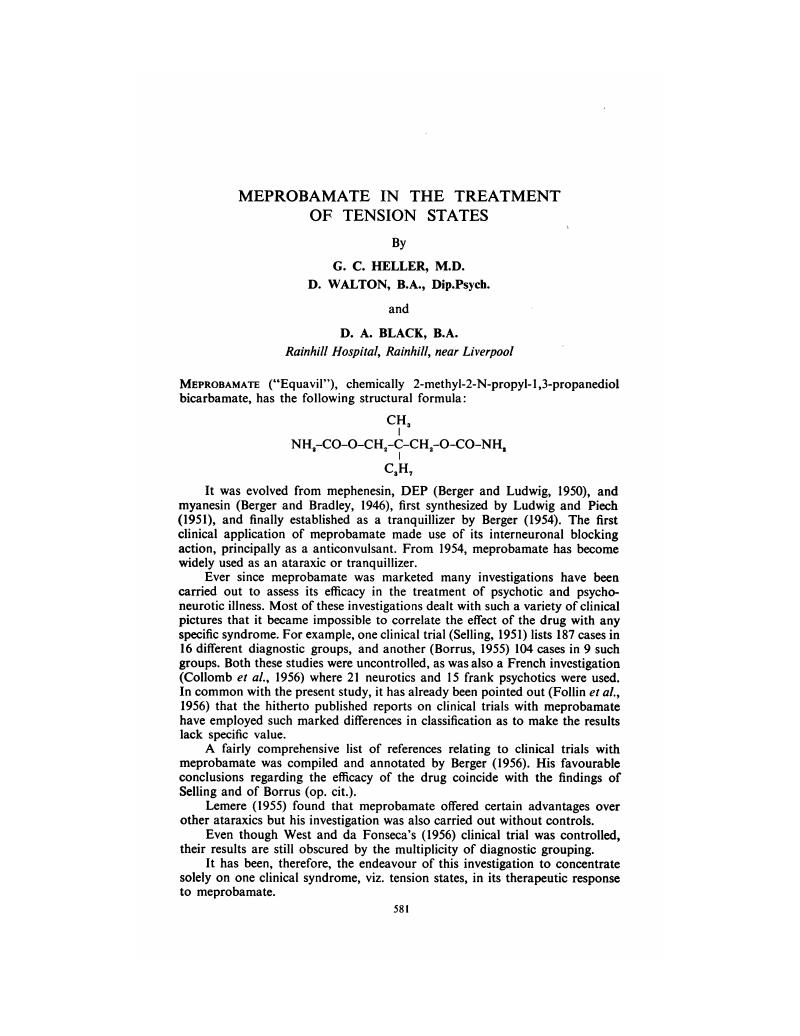Crossref Citations
This article has been cited by the following publications. This list is generated based on data provided by Crossref.
Laties, Victor G.
and
Weiss, Bernard
1958.
A critical review of the efficacy of meprobamate (Miltown, Equanil) in the treatment of anxiety.
Journal of Chronic Diseases,
Vol. 7,
Issue. 6,
p.
500.
Lienert, G. A.
and
Traxel, W.
1959.
The Effects of Meprobamate and Alcohol on Galvanic Skin Response.
The Journal of Psychology,
Vol. 48,
Issue. 2,
p.
329.
Miller, James G.
and
Uhr, Leonard
1959.
An experimental study of the behavioral effects of carbethoxysyringoyl methylreserpate (singoserp®).
Toxicology and Applied Pharmacology,
Vol. 1,
Issue. 5,
p.
534.
Marley, Edward
1959.
Response to Drugs and Psychiatry.
Journal of Mental Science,
Vol. 105,
Issue. 438,
p.
19.
Heller, G.C.
1961.
Notes On Design and Methodology in Psychiatric Clinical Trials.
International Journal of Social Psychiatry,
Vol. 8,
Issue. 1,
p.
55.
Fox, B.
1961.
The Investigation of the Effects of Psychiatric Treatment.
Journal of Mental Science,
Vol. 107,
Issue. 448,
p.
493.
Thorgersen, H. L.
and
Lienert, G. A.
1961.
The Effect of Meprobamate on Intellectual Test Performance with and Without Stress.
The Journal of Psychology,
Vol. 51,
Issue. 2,
p.
405.
Miller, James G.
1962.
The Individual Response To Drugs.
American Behavioral Scientist,
Vol. 5,
Issue. 6,
p.
3.
PARTRIDGE, MAURICE
1965.
The Scientific Basis of Drug Therapy in Psychiatry.
p.
179.
Aaronson, Bernard S.
1970.
Drugs: Personality:: Personality: Drugs.
Psychological Reports,
Vol. 26,
Issue. 3,
p.
811.
GREENBLATT, DAVID J.
and
SHADER, RICHARD I.
1971.
Meprobamate: A Study of Irrational Drug Use.
American Journal of Psychiatry,
Vol. 127,
Issue. 10,
p.
1297.
Kellner, Robert
1972.
Part 2. Improvement criteria in drug trials with neurotic patients.
Psychological Medicine,
Vol. 2,
Issue. 1,
p.
73.




eLetters
No eLetters have been published for this article.